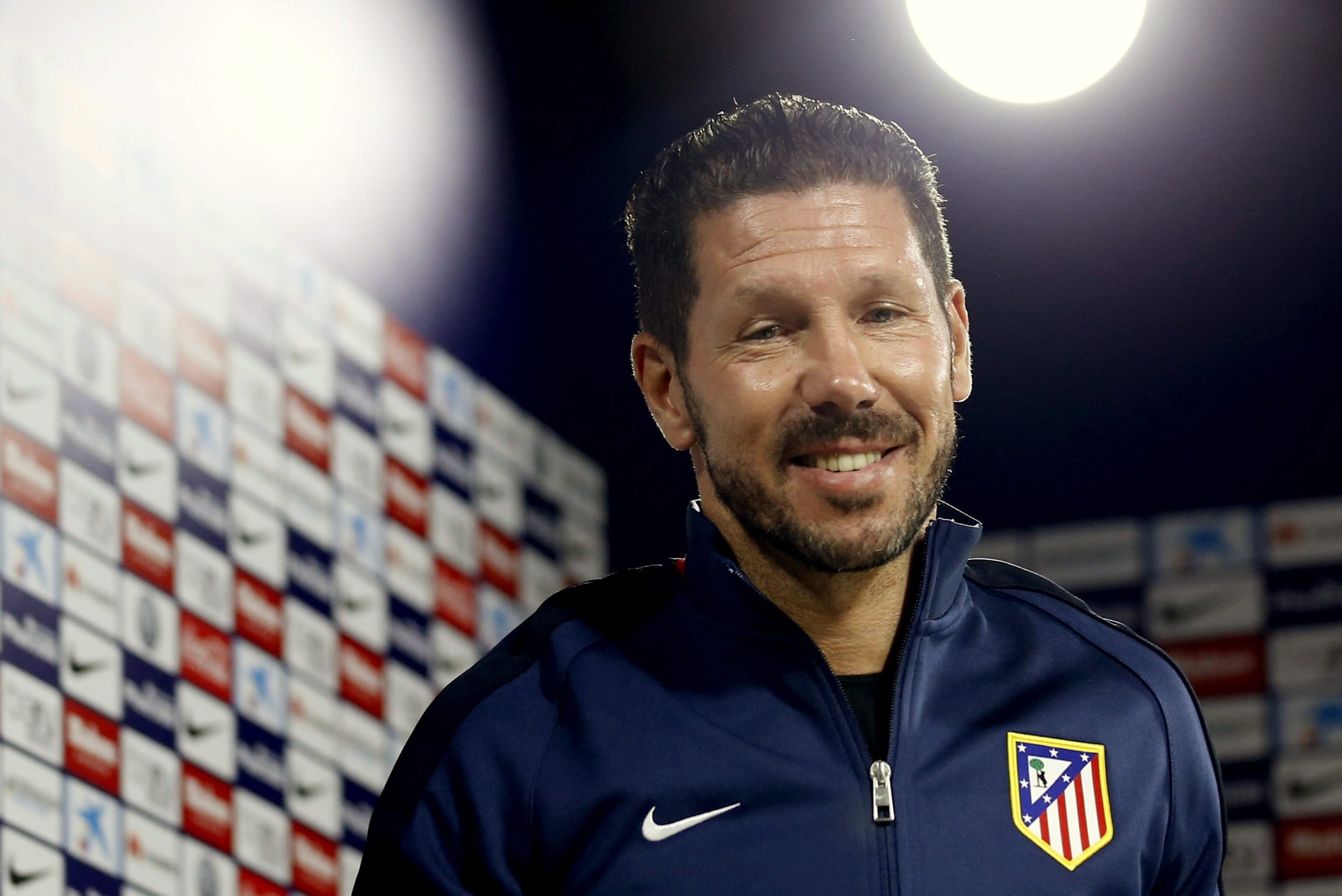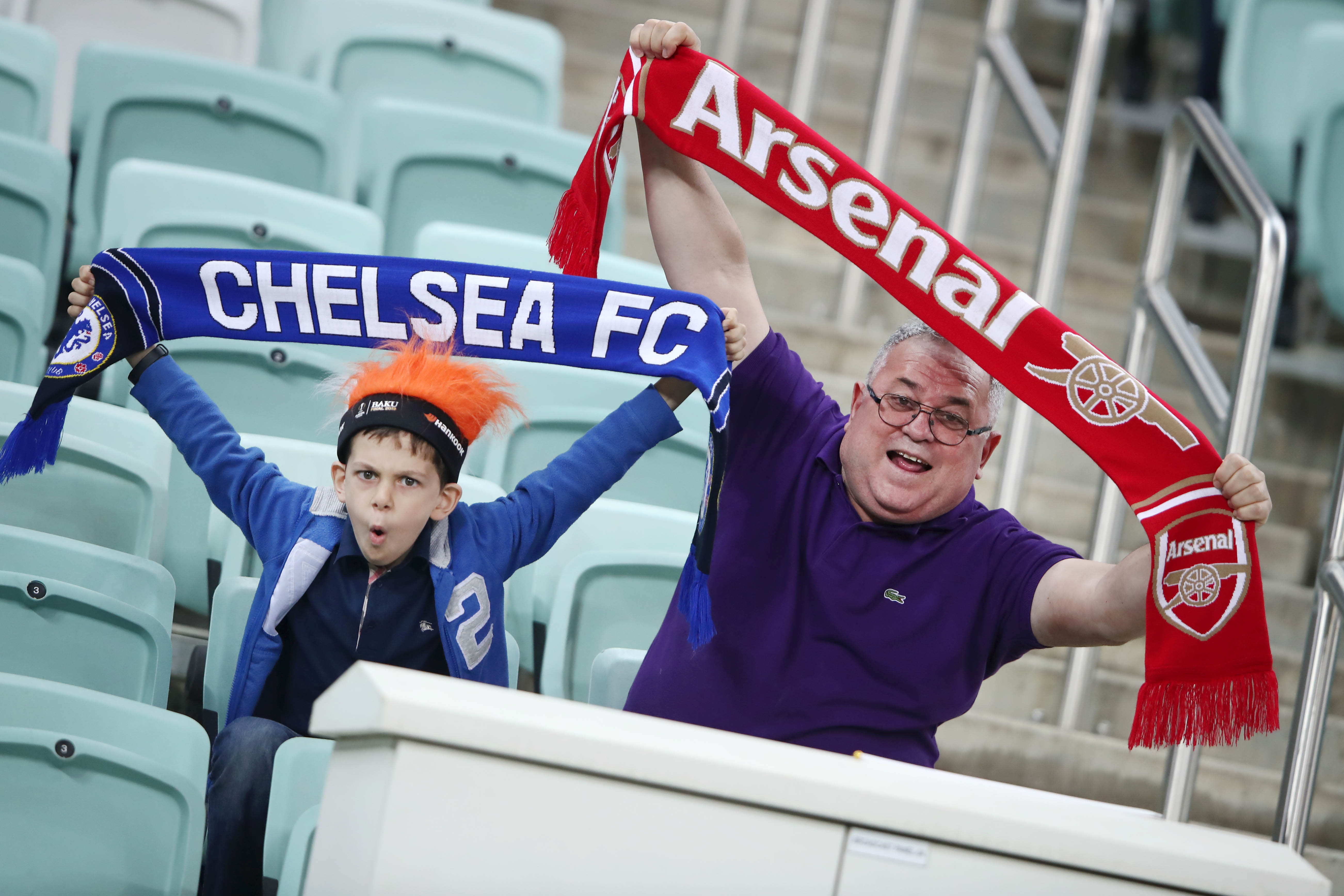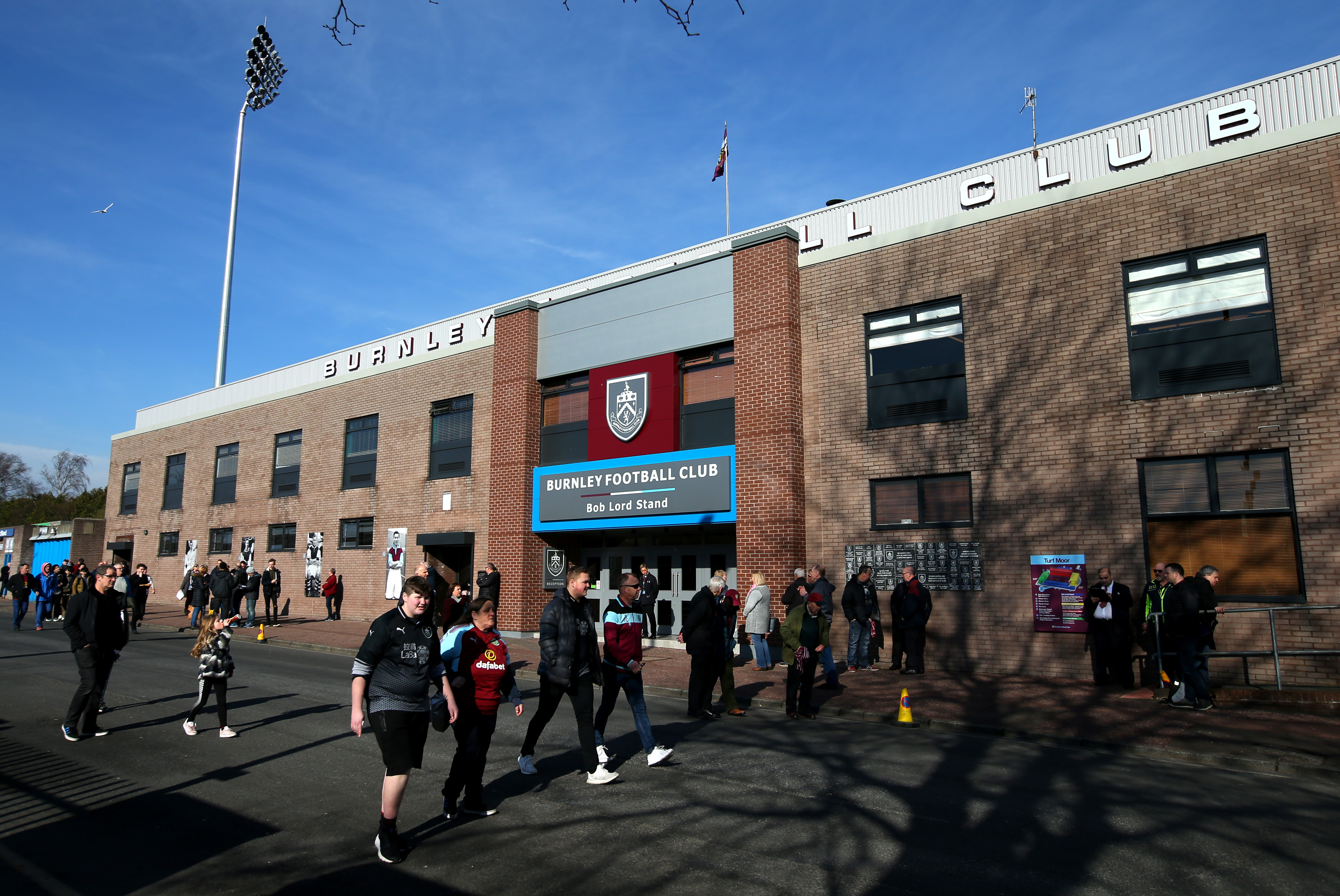Atletico Madrid seem to have finally found the right balance on both ends of the pitch, as they lead the charge for the coveted La Liga crown.
Since his arrival in Spain in 2011, Diego Simeone’s Atletico Madrid have become synonymous with being arguably the best defence in Europe. This does not stem from a star-studded backline, though. His team has always been greater than the sum of its parts – a setup that brings the best out of all individuals, eventually pivoting the team towards greatness.
In fact, Atletico have conceded the lowest goals in La Liga six times out of a possible nine since 2011/12. While this statistic is quite impressive in isolation, the context behind it is far more important. Simeone’s tactics of defensive cohesion has helped them challenge the likes of Barcelona and Real Madrid without too many ‘star’ players, or spending lavishly. Well, barring last season anyway.
This extends even beyond the realms of the Spanish league. Under the Argentine, Atleti have won two UEFA Europa League titles, one UEFA Super Cup and have finished as the runners up of the UEFA Champions League twice – losing to Real Madrid on both occasions. On top of that, they were also able to clinch the league title in the 2013/14 season courtesy a Diego Godin header at Camp Nou on the last day of the season.
As extraordinary as they are at the back, though, Atletico have often found themselves in a tough spot going forward. In most seasons, they have depended a little too much on a particular individual to take care of their goalscoring. Be it Radamel Falcao in 2011/12, Diego Costa in 2013/14 or Antoine Griezmann stretching from 2014-2019; they look containable barring that one player. Until now.
Flexing on Felix
Only 19 at the time, Joao Felix had registered 15 goals and seven assists in a breakthrough season for the eventual league champions SL Benfica. He also led the scoring for them in the Europa League, with three goals, which came in the form of a hat-trick against Eintracht Frankfurt.
Felix reeked of talent and maturity way beyond his years, not to mention brought an incredible amount of aesthetic value to any game he started. Almost immediately, Benfica slapped a €125 million release clause for his services. Atletico Madrid, who has just lost Antoine Griezmann to Barcelona, were rather bare in the attack. Rumours linking them with Felix did not take long, but it carried with them a huge set of pros and cons.
The cons were quite obvious, especially for the neutrals. Sending in a prodigious talent to play under Diego Simeone, a manager who had worked pretty much with older players till that point, sounded like an RKO to his career. Moreover, there was already controversy surrounding his price tag; he was 19 after all.
On the contrary, it was clear during his breakthrough season that he could not operate in just one role – playing off the striker, most commonly seen in a 4-4-2, or a 4-2-3-1. There were not many teams that used either system, and you could count the ones that could afford Felix on the one hand. Atletico took their chances on that bet and brought him in.
His six goals and one assist were probably not what Simeone had in mind with Felix, but it was what he got in their first season together. The weight of the price sticker, a lack of understanding from a manager set in his ways, coupled with the pressure of a new league brought Felix down. Slowly, but surely, however, the then 20-year-old gained more trust.
A cameo against RB Leipzig in the Champions League last season stands as a testament for his ability, as he came on and flipped the game on its head. He was subbed in with 30 minutes left, and in that time, won a penalty, converted it, created one chance, completed 100% of his passes and 100% of his dribbles. Atleti were knocked out following a late Tyler Adams winner, but it was a sign of better times to come for the youngster, and boy, have those times come.
There seems to be a lot more clarity in Felix’s role this season. He is finally filling in that void left by Griezmann, and proof of the same is five goals and two assists this season in eight games – a tally of seven direct contributions from last season which he has matched in 20 fewer games. On top of that, he has also scored two in the Champions League, including an 85th minute winner against Red Bull Salzburg.
However, his story runs deeper than just numbers. Last season, he was deployed majorly in his preferred ‘SS’ role but was told to continually rove behind the striker, occupying each zone, instead of attacking just one side.
That is because Simeone tried to mirror his strategy with Griezmann and applied it to the youngster, who while operating in the same position, was not the same player, and frankly, not ready to take up the same level of responsibility. The World Cup winner would comfortably take charge of the ‘hole’ between the attack and midfield as their primary creative and goalscoring threat.
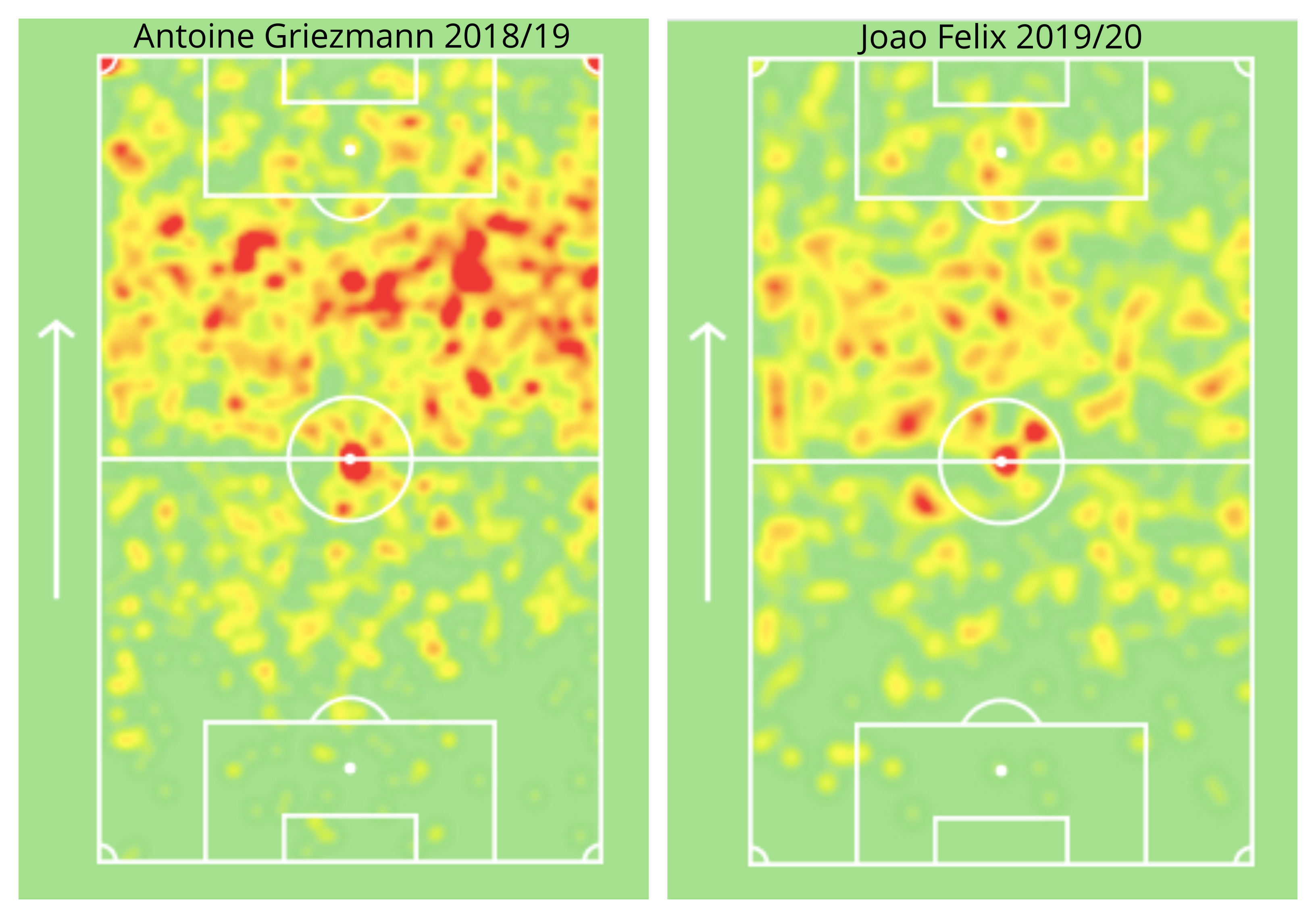
Simeone has learnt from his mistakes, though. Through all games this season, Felix has been deployed on the left of the front-two, where he is responsible for pretty much all threats coming down that side. Occupying a single area of the pitch with limited responsibilities has water-pumped the best out of the 21-year-old, who is clearly thriving in the team.
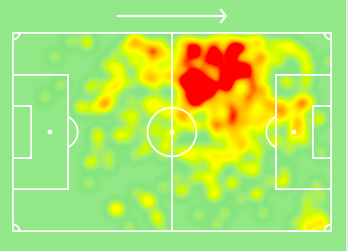
As opposed to Griezmann, who is stronger with his left foot and started on the right of either Alvaro Morata or Diego Costa, Felix is stationed on the left, from where he can pull strings alongside the striker, while also using exploring the opportunity to cut onto on his favoured right foot if the need arises. But, what does this mean for the rest of the team?
A Barter in the Build-up
Unsurprisingly, Diego Simeone has continued to use the 4-4-2 he has become metonymous with. For the first few games, he started Renan Lodi at left-back, with an attacking wide-midfielder ahead of him, rotating his options as he often does. However, an injury ruled out the Brazilian against Celta Vigo, and academy talent Manuel Sanchez was given a chance.
As luck would have it, though, Sanchez picked up an injury 50 minutes into his season debut. With no natural left-back on the bench or the versatile Saul Niguez, Simeone shifted Mario Hermoso to the left side of the back four, while Felipe was brought in the heart of the defence. Hermoso had played this role earlier in his career, but he is not the kind of full-back you would see bombarding the flank.
Instead, Hermoso held his own on the left, while Joao Felix and Yannick Carrasco terrorised that flank. On the opposite side, Marcos Llorente coupled with Kieran Trippier, provided enough cover to keep it alive. Eventually, a new system was born out of compulsion.
As part of his new tactics, El Cholo continued to deploy Hermoso as a left-back. He would, however, stay back to defend, and in fact, often tuck in, forming a three-man backline. His absence ahead on the pitch has been fulfilled by Joao Felix and the left-midfielder – more often than not Carrasco.
Trippier continues to venture forward through the right, leaving Stefan Savic to cover for him, while Jose Gimenez shifted to the centre to marshal the backline. The presence of Marcos Llorente helps Los Rojiblancos add more dynamism to their attack. The former Real Madrid midfielder has completely transformed himself, with Simeone making the most of his ability to carry the ball and his sensational stamina.
In possession, Atletico Madrid often resemble a 3-5-2, or even a 3-4-3, courtesy of Llorente, who is able to flank Luis Suarez from the right, with Felix on the left. Not only is the Spaniard an adept passer whose low driven crosses are always a threat in the box, but he can also hit one himself. The proof of the same was his shot birthed out of improvisation that rattled the crossbar against Barcelona early in the game.

Suarez almost always stays up the pitch, which often comes in handy for Trippier on the break as he can whip one of his trademark crosses in the hope someone will be there to meet it.
Additionally, Carrasco provides them with surreal energy from the left and someone, who, like Llorente, never stops running, but edges him in terms of pace. This helps Atleti have a space-dominant player on the pitch, who will chase every random long balls pinged over the opposition defence. This is particularly useful against teams who use a high-line, as Barcelona witnessed on the weekend.
The Belgian is predominantly right-footed and absolutely loves to drift inwards while on the edge of the box. And even though he has not scored a goal while cutting in for quite some time, Carrasco is always a threat when he rolls it on to his right. Moreover, he is a competent passer who can spin through balls from wide areas for other forwards.
Carrasco is also vital for Atleti in defence, when structured in a 5-3-1-1, or even a 6-3-1. He is not a stranger to playing in defence, often taking up the left wing-back role of Belgium. His experience in that role means you can often see him drop to Hermoso’s left. This also helped Atletico mark Ousmane Dembele, who has been in blistering form, double-teaming him in the second half.
Felix, for all his brilliance, does not quite boast of the same work rate as Griezmann, which means the likes of Carrasco and Llorente become all the more important. Not to mention Suarez, who was touted to develop a better work ethic playing under Simeone, but until now, has not. He has, however, bolstered their attack for the better.
The impact of El Pistolero
Even though he arrived for essentially peanuts from Barcelona, Luis Suarez was always going to have a major impact at Atletico Madrid, who had let Alvaro Morata join Juventus. Suarez, despite being at the last juncture of his career, is still double the striker Morata or Costa are and adds multiple layers to the attack.
Firstly, and the most obvious one, the Uruguayan has an eye for a pass. He is known as one of the most complete forwards of his generation for a reason, and his ability to pick out players and rack up assists is a major reason why. Having hard-working players like Carrasco, Llorente, Angel Correa and a fine finisher like Felix is a huge asset to the team as he can singlehandedly lock opposition defences with a through ball.
Suarez has averaged 0.7 key passes per game this season, compared to the 0.9 from last season, and the 1.5 from 2018/19, but that is also a result of the system apart from his age.
Secondly, Suarez is as goal-hungry as ever. His career at Barcelona has earmarked a time full of unselfishness where he has often kept the needs of the team ahead of his own, but has never failed to hide his hunger for goals. His body might now allow it, but Suarez is ready to hunt each through ball and cross to the ends of the earth and the gates of hell. Purely in terms of effort, no striker will come close to El Pistolero.
Finally, and most importantly, he is a player who can mentor Felix, teaching him both ways of playmaking and lethal finishing. They seem to have already formed a strong understanding, one that Griezmann could never with any striker at the club. A duo like this goes a long way in defining the season, often acting as the difference maker between a make or break campaign.
Conclusion
For several seasons, Diego Simeone and Atletico Madrid pursued a uniform team, spearheaded by an attack that could finally compliment their incredibly drilled defence; for they have often come short in one department, failing to challenge the likes of Barcelona and Real Madrid, who have created a monopoly in the league.
This season, the tide seems to be in their favour, at long last. They sit second in La Liga with 20 points from a possible 24, only three behind leaders Real Sociedad, who have played two extra games. They are also the second-highest scorers in the league with 18 and have conceded just two goals so far. Even more impressive is the fact that they are among the six teams who are still unbeaten across the top five leagues.
While Atletico Madrid’s start to the season is almost always impressive, they seem to be cooking something special this time around. They might finally reach the Spanish crown that has eluded them more often than not under Diego Simeone.
